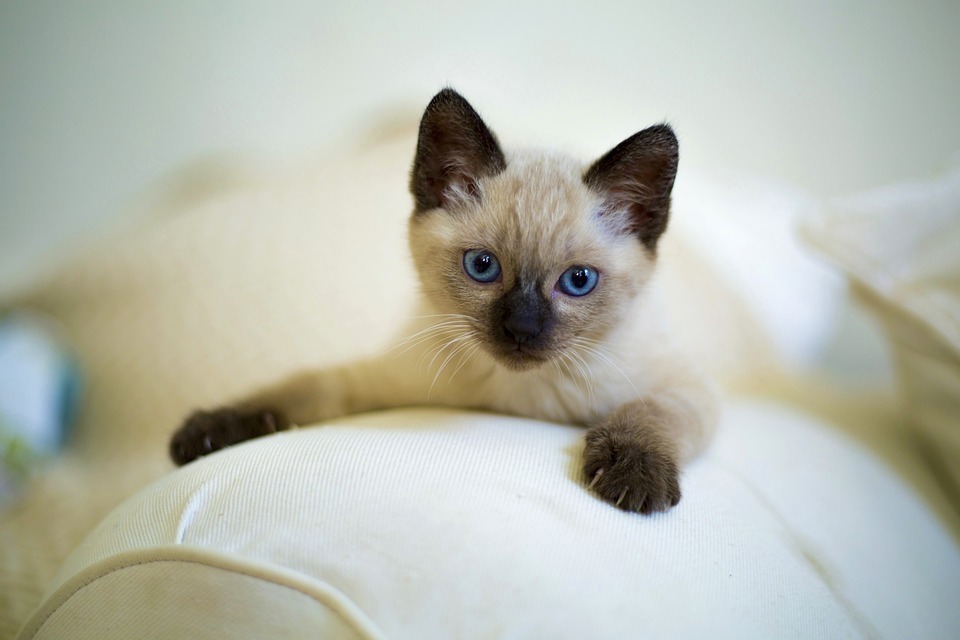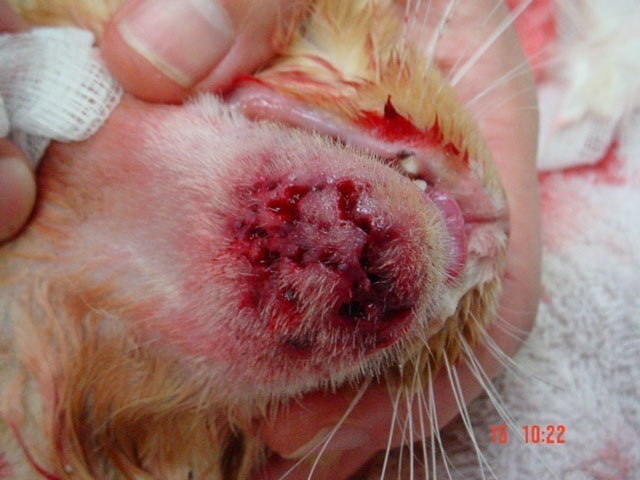Who can forget one of the joyous wonders of puberty? Which one, you ask? Acne of course! Our furry feline friends aren’t immune to developing this annoying skin condition. Yet many pet parents don’t recognize this problem in their cats. So, this week’s post highlights this skin disorder, and I hope you find the information helpful and interesting. Happy reading!

Acne – What is it?
This skin condition is defined as a disorder of follicular keratinization and glandular hyperplasia. Huh? Basically, hair follicles become obstructed. Various underlying causes have been identified as contributing to the formation of feline acne, particularly:
- Poor grooming
- Immune system suppression
- Stress
- Hair cycle changes
- Viruses
- Abnormal and/or excessive production of sebum (oily secretion of sebaceous glands)
Unlike dogs and humans, development in cats is not influenced by hormones or age. Indeed, cats of all breeds, sexes, and ages may be affected.
Acne – What does it look like?
Acne is cats is most commonly seen on the chin. The initial appearance is that of black debris and comedones (aka blackheads). These lesions are often unnoticed by pet parents. As the condition progresses, scabbing, papules (bumps), and pustules (whitehead or pimples) form. As obstructed hair follicles continue to grow, they ultimately rupture, a condition called furunculosis that is associated with pain and discharge from the lesions. The skin in the chin region ultimately becomes thickened, swollen, and develops scar tissue.

Acne – How is it diagnosed?
Other skin conditions have similar appearances. These disorders include:
- Eosinophilic granuloma complex
- Yeast infection (malassezia)
- Demodectic mange (called demodicosis)
- Ringworm (called dermatophysosis)
Veterinarians will perform some skin tests, include skin scraping, a tape preparation, and possibly a minimally invasive skin biopsy to rule out other skin condition. Pet parents may find it helpful to partner with a board-certified veterinary dermatologist to develop an appropriate diagnostic plan.

Acne – How is it treated?
Most patients can be treated with topical therapies that include:
- Clipping the hair in the affected region
- Gentle washing of affected skin with shampoo containing benzoyl peroxide or ethyl lactate
- Topical antibiotic ointments or creams (e.g.: mupirocin, fusidic acid).
Occasionally, cats develop secondary bacterial and/or fungal skin infections. Systemic antibiotic and/or antifungal medications are needed for the patients. The prognosis is generally good for cats with acne, but some felines need lifelong topical therapy.
The take-away message about acne in cats…
Cats get acne just like people. Classic blackheads may go unnoticed on the chin under they develop into full-fledged whiteheads. It is important to rule out other skin conditions that can have similar appearances. Early identification and treatment is generally associated with a good prognosis.
To find a board-certified veterinary dermatologist, please visit the American College of Veterinary Dermatology.
Wishing you wet-nosed kisses,
CriticalCareDVM





